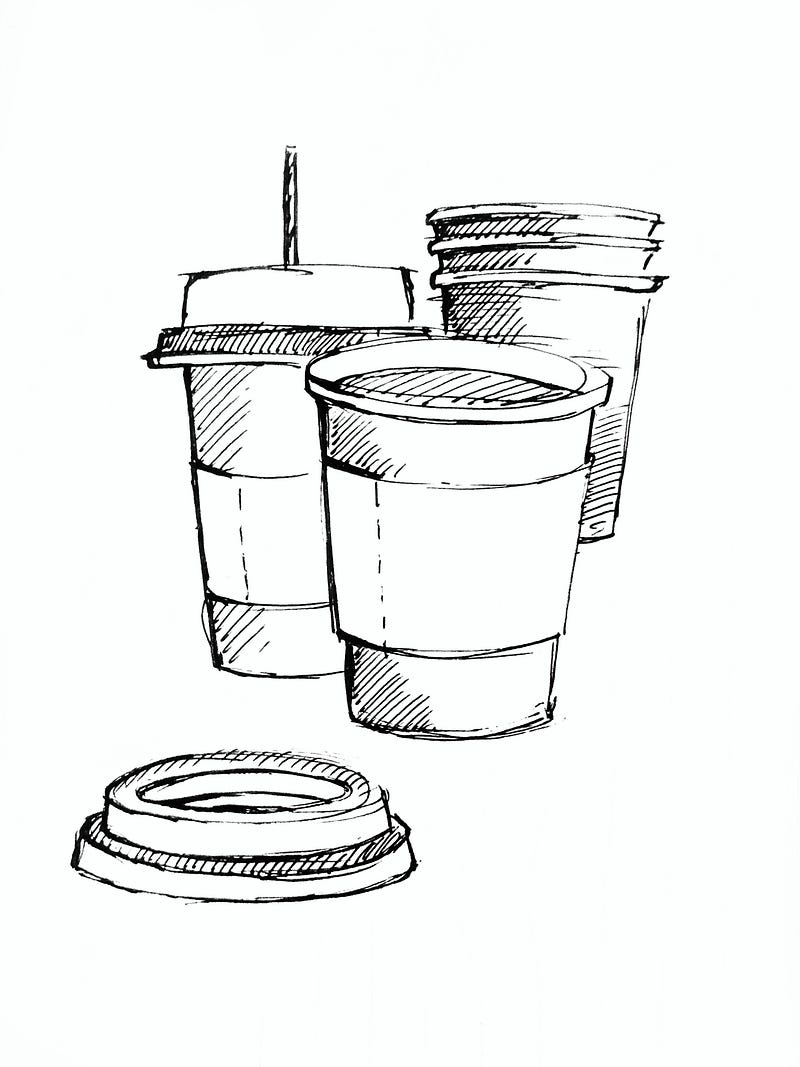
I can’t say that my addiction to caffeine started in college, nor did it start in high school. Rewinding to middle school reminds me of sleepless nights and stacks of coffee-stained paper. As a coffee lover, as well as an avid consumer and maker of it, I began indulging at a very young age. Searching for the best cup of coffee available, I perused local and international cafes, and aimed to both become more knowledgeable about coffee and find what I enjoyed most.
However, I never imagined that a few sips of a latte would snowball into surviving off of 10 cups of black coffee a day at the age of 19, and a few trips to the hospital due to having pierced a hole in my stomach from drinking so much of the beverage that I believed could bring me eternal bliss and energy. After being told that I could no longer drink coffee on a daily basis since I had made my own stomach bleed, instead of doing the rational thing, I opted for alternatives rather than renunciation. My bedroom began to look more like a battlefield than a living space, and became scattered with empty bottles of diet soda and energy drinks.
As they piled on, so did the symptoms of what I failed to realize was an addiction. I became restless, irritable, disoriented, and increasingly anxious. Nothing seemed to calm me down; my hands constantly trembled — which they still do — and my muscles seemed to undergo major quakes everyday. As I was delving deeper into this addiction, I recognized similar patterns of behavior amongst my peers. They also showed up to class with caffeine-infused drinks and stayed up all night, accompanied by the pressure to succeed and, of course, a delicious cup of coffee. And as the semester progresses, I see more joining in. The coffee supply at Commons runs dry early on in the day and is constantly being refilled. Vending machines are looking emptier by the day, and caffeine pills are popped like candy. A 2017 study which surveyed five U.S. colleges found that caffeine was consumed by 92 percent of students in these colleges.
Caffeine consumption has seen a rapid increase in the past two decades, especially amongst college students. The pressure of deadlines, the piles of work, and the lack of time in what doesn’t seem like twenty four hours are all contributing to this addiction. In an effort to make the most of our time, college students resort to caffeine, relying on adenosine for energy and alertness and dopamine for pleasure. You would think that caffeine, being one of the most chemically addictive components in beverages, would be accompanied by a warning label. Instead, caffeine levels are treated as a competition among coffee drinkers, and consuming ridiculous amounts of caffeine is slowly becoming the norm.
When it comes to caffeine, addiction is joked about, and students’ heavy reliance on it is easily dismissed and overlooked.
Why is caffeine addiction not treated as a serious problem rather than a simple dependency when side effects of withdrawal can be just as severe as those of other “hard” drugs? Its reputation as mild and safe has destigmatized the severe long term health effects that are linked to its regular consumption, such as heartburn, stomach ulcers, depression, anxiety, insomnia, high blood pressure, and heart disease.
Caffeine’s safe zone extends up to 400 milligrams, which may seem like a boundary that students can avoid crossing. However, taking into account the fact that an average cup of coffee contains between 100 and 120 milligrams of caffeine, and energy drinks such as Monster contain 130 milligrams, it becomes clearer that approaching the 400 limit is plausible, if not commonplace. Regrettably, many can easily exceed this level, further fueling their addiction.
Caffeine has become the steroid that can help the athlete win the race. Since balancing workload, activities, and social life has become nearly impossible in this day and age, college students are using caffeine to attempt to keep up with it. But is it truly worth it to become so addicted to a substance, and to witness even more students becoming zombified by it? But how do you leave it, if you need it to be able to get through the day and, in the long-run, be successful in college? Dedicating less and less time to sleep and self-care, college students like myself delve into piles of work and responsibilities alongside our best friends: dopamine and adenosine.

















